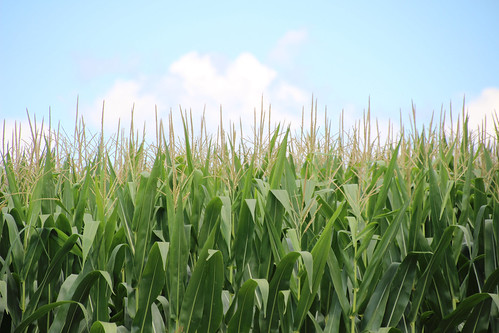
Since its inception nearly 100 years ago, USDA’s Agricultural Outlook Forum has provided analysis of the farm economy, including the short- and long-term outlook for agricultural commodity markets. Producing credible and reliable information about supply and demand conditions for all the major crop and livestock markets, along with the implications for prices, production and trade, is a year-round process that relies on expertise from dozens of highly-trained analysts spread across several USDA agencies, including USDA’s Economic Research Service (ERS).
Each month, USDA’s Office of the Chief Economist releases its World Agricultural Supply and Demand Estimates (WASDE) report, providing the latest USDA consensus view of the market conditions and price expectations for all major grains, oilseeds, dairy, and livestock.
The process of creating the WASDE is coordinated by the World Agricultural Outlook Board (WAOB), which draws upon data, analysis, and insight from many USDA agencies including the Agricultural Marketing Service (AMS), Foreign Agricultural Service (FAS), Farm Service Agency (FSA), and the National Agricultural Statistics Service (NASS), in addition to ERS. The WASDE report is highly regarded as a benchmark for commodity markets, reflecting its comprehensive nature, complete objectivity, and timeliness.
ERS contributes to this process by maintaining many important datasets, statistical and economic models, and professional expertise necessary to analyze and understand these rapidly changing, complex markets. Most of the data and information that ERS contributes to the WASDE is also released for public use on the ERS website. Within a few days following the WASDE, ERS releases Commodity Outlook Reports that cover each of the major crop and livestock markets. These reports provide a “deep dive” into the factors driving market conditions and the context behind the WASDE estimates, along with additional supporting data that is useful for understanding the current Outlook.
ERS is also a primary source of specialized expertise on issues that can affect the longer-term outlook for markets, including developments in China and other major markets, and the implications of changing trade and agricultural policies in the United States and worldwide. Research on these and other topics can inform the commodity outlook process, and is often released publicly as “Special Outlook” reports or research publications.
Consistent with its role as a Federal Statistical Agency, ERS also creates and releases a wealth of unique and timely data about agricultural markets. While NASS and other statistical agencies collect much of the data, ERS uses it to create economic indicators that reflect conditions in the agricultural economy. Some of these widely used indicators include the official U.S. Farm Income estimates, Agricultural Trade Multipliers, Meat Price Spreads, and Commodity Costs and Returns estimates. These data, along with many other highly-detailed commodity market datasets used in the Outlook process, follow rigorous information quality guidelines, including periodic peer review, and are updated and released on a fixed schedule.
Timely and reliable commodity market information facilitates decision making by industry participants along the entire food supply chain, from farmers to retailers, and is also a critical input to policy decisions and farm program operations. To learn more about ERS Commodity Outlook information, visit the ERS website or stop by the ERS booth at USDA’s 94th Annual Agricultural Outlook Forum.


